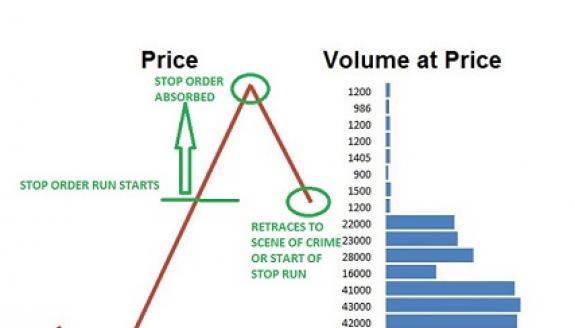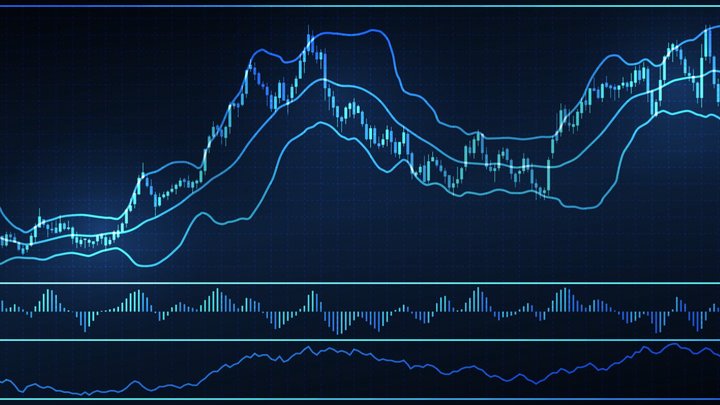
Pullback entry
A market's pullback is when it moves back toward a trend's start point. A pullback is dependent on the trend. It can be shallow or deep. These indicators include moving averages or Fibonacci levels. The more signals you have, the more reliable your decision will be.
A pullback is part of any uptrend. It can happen due to a sudden drop, profit taking, or negative news regarding the underlying stock. Trader who is a follower of trends often use pullbacks in order to add to or enter long positions. You can use market orders or stop buy entry and buy limit order to enter at these times.
Breakout strategy
In trading, a breakout strategy is very important. It allows traders to enter a trade when price moves outside of its range. This strategy helps traders capitalize on the upcoming trend instead of waiting for a longer-term trend. A breakout strategy is more successful than traders who just follow price patterns.

Breakouts typically occur near designated resistance lines. A failed breakout is usually when the key breakout levels fail to hold and the price loses momentum. It is important to determine the time frame during which the price will remain in the breakout. In addition, traders should identify the profit and risk levels of their trade. Ideally, the trader should risk the same amount as they hope to make.
Day trading is risky
Day traders, unlike long-term investors are often required to take split-second decisions. They must keep track of economic factors, market trends, and news cycles. They need to be familiar with the details of specific industries and products. These investors could make big profits or lose their money. Day traders might also face margin calls that can result in them losing their money.
Day trading presents one of the greatest risks. Trading day requires a lot of concentration in order to track the stock prices. Traders who are unable to manage their stress can make mistakes. Traders should not allow emotions to influence their investment decisions. Alternative options include a buy and hold strategy. This involves analysing different companies and selecting them according to key factors.
Strategies used
There are many day trade strategies that you can choose from. However, the gap & go strategy is the most widely used. This strategy focuses on stocks that show a consistent uptrend and have moderate retracements. Finding a low-risk price entry is crucial for a profitable trade. This can be done by using indicators like trendlines or moving averages. The trade should be risk-reward based at least 1:1.

Day trading strategies can help you minimize your risk and maximize your profits. Once you have determined a strategy to use, it is time for you to choose the right instruments to trade. There are many options available: stocks, ETFs and futures.
FAQ
What is the purpose of the Securities and Exchange Commission
Securities exchanges, broker-dealers and investment companies are all regulated by the SEC. It enforces federal securities regulations.
Why is a stock called security.
Security is an investment instrument, whose value is dependent upon another company. It can be issued by a corporation (e.g. shares), government (e.g. bonds), or another entity (e.g. preferred stocks). The issuer promises to pay dividends and repay debt obligations to creditors. Investors may also be entitled to capital return if the value of the underlying asset falls.
Who can trade in the stock market?
The answer is everyone. However, not everyone is equal in this world. Some people are more skilled and knowledgeable than others. They should be recognized for their efforts.
But other factors determine whether someone succeeds or fails in trading stocks. You won't be able make any decisions based upon financial reports if you don’t know how to read them.
You need to know how to read these reports. You must understand what each number represents. You must also be able to correctly interpret the numbers.
Doing this will help you spot patterns and trends in the data. This will assist you in deciding when to buy or sell shares.
And if you're lucky enough, you might become rich from doing this.
How does the stock market work?
When you buy a share of stock, you are buying ownership rights to part of the company. Shareholders have certain rights in the company. He/she can vote on major policies and resolutions. The company can be sued for damages. He/she also has the right to sue the company for breaching a contract.
A company cannot issue more shares than its total assets minus liabilities. This is called "capital adequacy."
A company with a high capital adequacy ratio is considered safe. Companies with low ratios are risky investments.
What is a Reit?
A real estate investment trust (REIT) is an entity that owns income-producing properties such as apartment buildings, shopping centers, office buildings, hotels, industrial parks, etc. They are publicly traded companies that pay dividends to shareholders instead of paying corporate taxes.
They are similar in nature to corporations except that they do not own any goods but property.
How do I choose a good investment company?
Look for one that charges competitive fees, offers high-quality management and has a diverse portfolio. The type of security in your account will determine the fees. Some companies don't charge fees to hold cash, while others charge a flat annual fee regardless of the amount that you deposit. Others may charge a percentage or your entire assets.
It's also worth checking out their performance record. You might not choose a company with a poor track-record. Avoid companies with low net assets value (NAV), or very volatile NAVs.
Finally, it is important to review their investment philosophy. A company that invests in high-return investments should be open to taking risks. If they are unwilling to do so, then they may not be able to meet your expectations.
Statistics
- For instance, an individual or entity that owns 100,000 shares of a company with one million outstanding shares would have a 10% ownership stake. (investopedia.com)
- Our focus on Main Street investors reflects the fact that American households own $38 trillion worth of equities, more than 59 percent of the U.S. equity market either directly or indirectly through mutual funds, retirement accounts, and other investments. (sec.gov)
- Ratchet down that 10% if you don't yet have a healthy emergency fund and 10% to 15% of your income funneled into a retirement savings account. (nerdwallet.com)
- The S&P 500 has grown about 10.5% per year since its establishment in the 1920s. (investopedia.com)
External Links
How To
How to Invest Online in Stock Market
The stock market is one way you can make money investing in stocks. There are many ways you can invest in stock markets, including mutual funds and exchange-traded fonds (ETFs), as well as hedge funds. The best investment strategy is dependent on your personal investment style and risk tolerance.
To be successful in the stock markets, you have to first understand how it works. Understanding the market and its potential rewards is essential. Once you've decided what you want out your investment portfolio, you can begin looking at which type would be most effective for you.
There are three main types of investments: equity and fixed income. Equity refers to ownership shares in companies. Fixed income can be defined as debt instruments such bonds and Treasury bills. Alternatives are commodities, real estate, private capital, and venture capital. Each category has its own pros and cons, so it's up to you to decide which one is right for you.
You have two options once you decide what type of investment is right for you. One strategy is called "buy-and-hold." You purchase a portion of the security and don't let go until you die or retire. The second strategy is "diversification". Diversification means buying securities from different classes. By buying 10% of Apple, Microsoft, or General Motors you could diversify into different industries. Buying several different kinds of investments gives you greater exposure to multiple sectors of the economy. It helps protect against losses in one sector because you still own something else in another sector.
Risk management is another crucial factor in selecting an investment. Risk management is a way to manage the volatility in your portfolio. If you were only willing to take on a 1% risk, you could choose a low-risk fund. However, if a 5% risk is acceptable, you might choose a higher-risk option.
Knowing how to manage your finances is the final step in becoming an investor. You need a plan to manage your money in the future. You should have a plan that covers your long-term and short-term goals as well as your retirement planning. Then you need to stick to that plan! Don't get distracted by day-to-day fluctuations in the market. Your wealth will grow if you stick to your plan.